BLOG
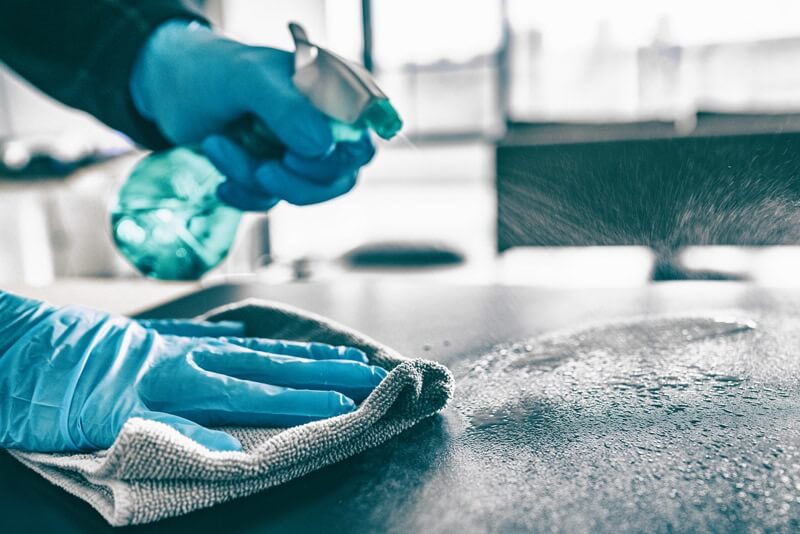
Coronavirus Prevention: Home & Office Cleaning Guide
With the Coronavirus (COVID-19) pandemic’s continued spread across the world, many of us have shifted our focus to the importance of keeping our surroundings clean and virus-free.
These days, knowing how to effectively clean and protect your workplace and living space from Coronavirus is paramount. But how many of us actually know which cleaning products are best suited to our needs and at the same time, feel confident using these products correctly?
Cleaning, sanitising and disinfecting your home or office environment against Coronavirus infection isn’t really that hard once you know what to do and which products to use. Here is a handy guide to help demystify the anti-viral cleaning process:
Cleaning
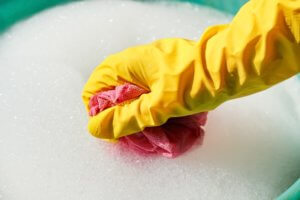
Cleaning is the process of removing germs and dirt from surfaces. There’s really no need for any fancy methods or cleaning equipment here. Simply scrubbing surfaces clean with soapy detergent and water will get the job done.
One thing to be wary of is that cleaning surfaces on their own won’t kill or completely eliminate germs. After thoroughly cleaning, you’ll also need to disinfect surfaces as an additional step to help minimise the spread of an infection.
Sanitising Vs Disinfecting – What’s The Difference?
Both sanitising and disinfecting aim to reduce surface contamination by killing germs. However, using a surface disinfectant is a more effective method over sanitising when combatting Coronavirus. Here’s a quick rundown on the differences between the two:
Sanitising
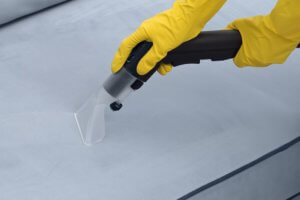
Sanitising is just one method of reducing germs and can be done without chemicals. Methods include using a steam cleaner on surfaces such as fabric or carpet to kill bacteria or germs using extreme heat. Home appliances such as dishwashers or washing machines (along with a laundry sanitiser combined with a hot wash) can be used to help eliminate germs from our cutlery, dishes, clothing and bed sheets using heat.
Disinfecting
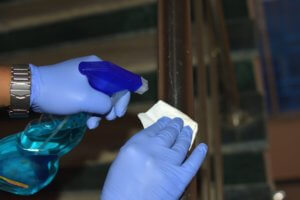
Disinfecting is the only way you can effectively remove a viral contamination or germs from a surface. Be sure to use only a hospital-grade disinfectant or one approved by the Environmental Protection Agency (EPA). Check that the disinfectant you are looking to use has an anti-viral property (and is not just an antibacterial cleaner). Antibacterial disinfectants will not effectively protect your environment from Coronavirus so make sure your cleaning product has the right properties.
If you suspect that a surface is contaminated, you’ll need to take special precautions. Be sure to clean and disinfect high-risk areas more frequently and in particular, focus on heavy-traffic shared surfaces such as handles, door knobs, sinks, basins, bedrails, tables and light switches.
Not All Cleaning Products Are Made Equal
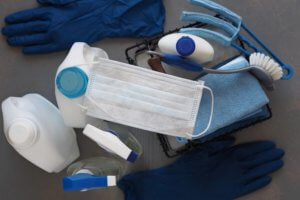
The type of cleaning and disinfectant products you use will depend on the type of surface you are looking to clean. Be sure to check that products are safe and suitable for use on surfaces and spot test where necessary.
Clean using soapy detergent and disinfect with a suitable product containing at least 70% ethanol, 0.5% hydrogen peroxide or 0.1% sodium hypochlorite. You can also use regular household bleach for disinfecting against COVID-19.
Use paper towels, cloths or disposable wipes and avoid recontaminating a surface by cleaning or disinfecting from left-to-right, high to low in an “S” shape. It shouldn’t really matter too much what kind of cloth or disposable wipes you use as long as you put a bit of effort into scrubbing the surfaces.
Use disposable gloves and single-use cleaning cloths if possible. Once you’ve finished cleaning, place soiled re-usable cloths in the laundry and wash them with sanitising detergent in a hot wash for best results.
Things to remember:
- Follow the right steps: first clean, then disinfect
- Focus on high-traffic, high-touch surfaces
- Clean contaminated or high-touch areas at least once a day
- Disinfect with an anti-viral (not antibacterial) disinfectant
- Wear gloves while cleaning
- Be sure to read and follow cleaning product instructions before attempting to clean
- Carefully dispose of single use gloves and cloths
- Wash your hands thoroughly after cleaning
Not Sure If You’re Doing It Right?
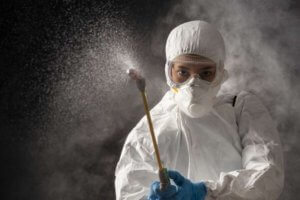
Call the professionals for peace of mind! National Trauma (NTCSC) are Australia’s trusted and experienced biohazard and forensic cleaners. We specialise in professional Coronavirus (COVID-19) cleaning, sanitation and decontamination of homes, offices and commercial buildings.
Using EPA registered chemicals, virucide fogging and other professional biohazard remediation methods, we can effectively decontaminate your home or business and prevent Coronavirus spread.
Call us any time 24/7 for an obligation-free Coronavirus cleaning & disinfection quote.

